
2010 Smart Growth Summit

100 speakers and 950 regional, community, business leaders and youth present solutions, best practices
to LI’s land use and infrastructure issues
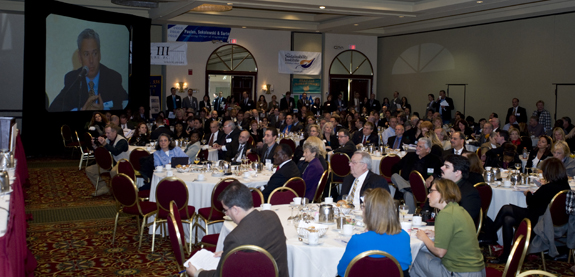
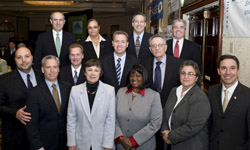
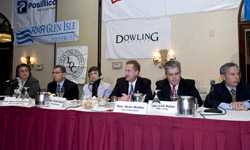 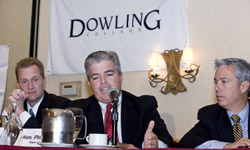
Town of Riverhead Supervisor Sean Walter, Town of Babylon Supervisor Steve Bellone, Town of Islip Councilman Steve Flotteron (right)
 
Newsday's Joye Brown (left); Town of North Hempstead Supervisor Jon Kaiman (right)
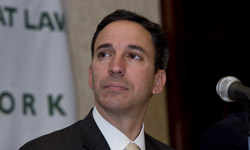 
Village of Mineola Mayor Jack Martins (left); Town of Islip Councilman Steve Flotteron (right)
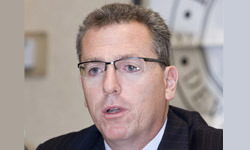 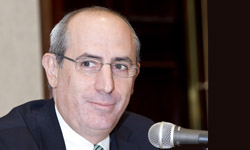
Town of Huntington Councilman Mark Cuthbertson (left); City of Glen Cove Mayor Ralph Suozzi (right)
 
Town of Hempstead Councilwoman Dot Goosby (left); Town of Riverhead Supervisor Sean Walter (right)
 
Village of Port Jefferson Mayor Margot Garant (left); Town of Brookhaven Councilwoman Connie Kepert (right)
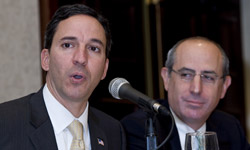 
Village of Mineola Mayor Jack Martins and City of Glen Cove Mayor Ralph Suozzi (left); Nassau County Village Officials Association's Warren Tackenberg (right)
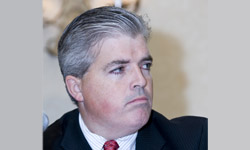 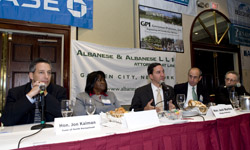
Town of Babylon Supervisor Steve Bellone (left)
A full description of the morning session will be available in next week's newsletter.
 
Vision Long Island's Executive Director Eric Alexander (left); Chairman of the Board of Trustees of the Shinnecock Nation Randy King (right)
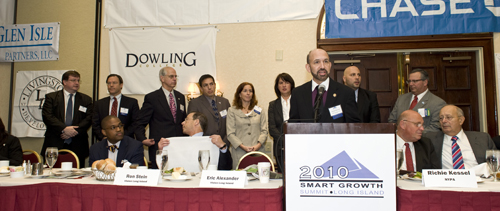
Left-right: Nassau Council of Chambers of Commerce's Chris Murray, Empire State Future's Peter Fleischer, LISTnet's Peter Goldsmith, AARP-NY's Will Stoner, Citizens Campaign for the Environment's Adrienne Esposito, Dowling College's Dr. Nathalia Rogers, Vision Long Island's Eric Alexander, LI Federation of Labor and Local 338's John Durso and (speaking) LI Rep for the Office of NYS Governor David Paterson's Michael Harrison
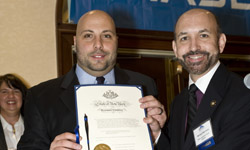 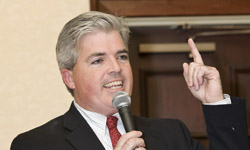
Vision's Eric Alexander and Michael Harrison of the Office of NYS Gov. David A. Paterson (left); Babylon Town Supervisor Steve Bellone (right)
 
New Hyde Park Chamber of Commerce's Angela Powers (left); NYPA's Richie Kessel (right)
 
Members of the Youth Summit, including Lori Interlicchio (left) Kelly Douglas (right) from West Islip High School (right)

 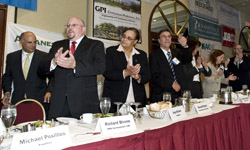
 
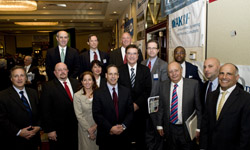 
Vision's Eric Alexander and Ron Stein with Hon. Al D'Amato (right)
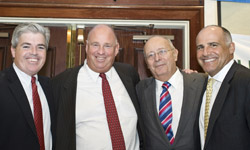 
Town of Babylon Supervisor Steve Bellone, NYPA's Richie Kessel, Hon. Al D'Amato and Posilico's Michael Posillico (left); NYPA's Richie Kessel, Hon. Al D'Amato and LI Business Council's Rich Bivone (right)
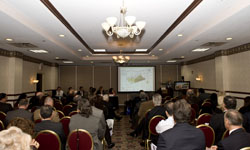 
Peter Sloggatt of The Long Islander, Anthony Bartone of Bartone Properties, Brian DeLuca of Atlantis Marine World, Dana Friedman of the Early Years Institute and Lynda Parmely of The Hagedorn Foundation (right)
 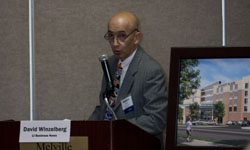
Don Monti, Renaissance Downtowns (left); David Winzelberg, LI Business News (right)
 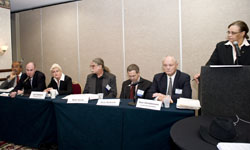
Richard Koubek of Huntington Township Housing Coalition, David Reich-Hale of Patch.com, Jaci Clement of Fair Media Council, Matt Harris of Say NO to Avalon Bay at Huntington Station, RIch McGrath of the Huntington School Board, Ken Christensen of Leadership Huntington and Joye Brown of Newsday
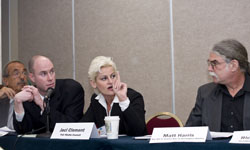 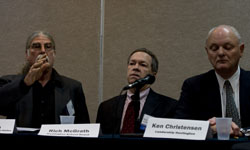
Richard Koubek of Huntington Township Housing Coalition, David Reich-Hale of Patch.com, Jaci Clement of Fair Media Council and Matt Harris of Say NO to Avalon Bay at Huntington Station (left); Matt Harris of Say NO to Avalon Bay at Huntington Station, RIch McGrath of the Huntington School Board and Ken Christensen of Leadership Huntington (right)
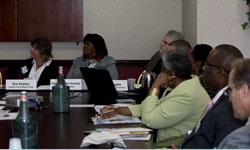 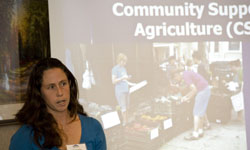
Eve Kaplan-Walbrecht of Garden of Eve Organic Farm (right)

Bernadette Martin of Kennedy Plaza Market, Eve Kaplan-Walbrecht of Garden of Eve Organic Farm, Town of Hempstead Councilwoman Dot Goosby and Larry Foglia of Natural Resources Consulting
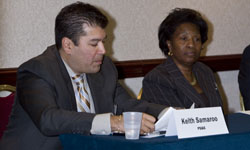 
Keith Samaroo of PS&S and Rabia Aziz of LI Minority AIDS Coalition (left)
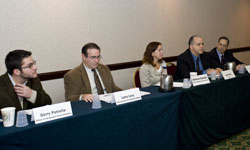
Gerry Petrella of Sen. Schumer's LI Office, Larry Levy of the National Center for Suburban Studies at Hofstra University, Adrienne Esposito of Citizens Campaign for the Environment , Jose Velez of HUD and Ron Stein of Vision Long Island
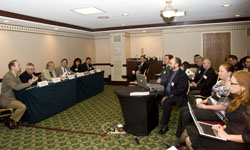 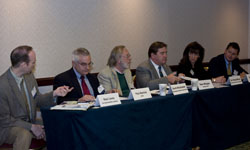
Neal Lewis of the Sustainability Institute at Molloy College, David Winchester and Terri Alessi-Miceli of the Hauppauge Industrial Association, Sean Mongan of National Grid, Dan Zaweski of LIPA and Paul Belnick of NYPA (right)

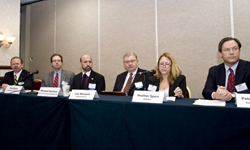 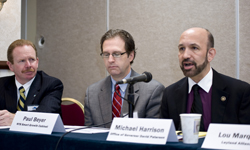
Peter Scully of the NYS DEC, Paul Beyer of the NYS Smart Growth Cabinet, Michael Harrison of the Office of Gov. David Paterson, Lou Marquet of LeylandAlliance, Heather Sporn of NYS DOT and Peter Fleischer of Empire State Future (left)
 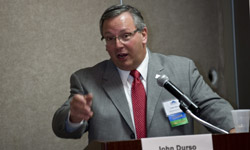
Vincent Pizzulli, Certilman Balin (left); John Durso, LI Federation of Labor, Local 338 (right)
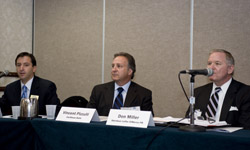
Michael Adler, Beechwood Organization and Don Miller of HLD Public Relations
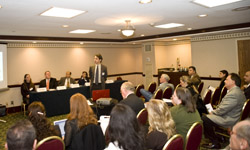 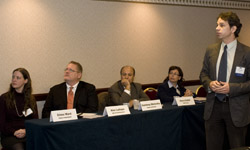
Elissa Ward of Vision Long Island, Alex Latham of ADL III Architecture, Sandeep Mehrotra of Hazen and Sawyer, Diane Saltel of H2M and Mark Wouters of Cooper Robertson & Partners and CNU-NY
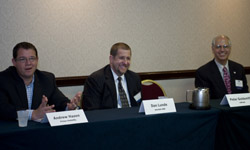
Andrew Hazen of Prime Visibility, Dan Lunde of ancotel USA and Peter Goldsmith of LISTnet
 
 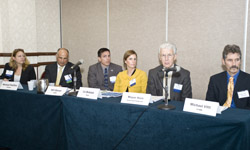
Veronica Vanterpool, Tri-State Transportation Campaign (left); Heather Sporn of NYS DOT, Michael Posillico of Posillico, Will Stoner of AARP NY, Liz Bolsted of Go21, Mayer Horn of Greenman-Pedersen and Michael Vitti of Convenient Long Island Mountain Bicycling (CLIMB) (right)
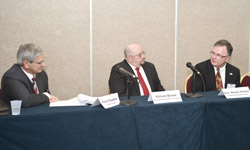 
Rich Guardino of Hofstra University, Rich Bivone of LI Business Council and Suffolk County Legislator Wayne Horsley; Bruce Migatz, Albanese & Albanese (right)

Dan Deegan of Forchelli Curto Deegan
 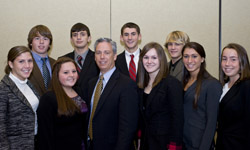
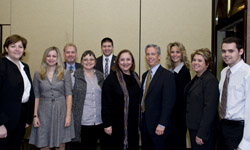 
Participants in the Youth Summit from Dowling College and West Islip High School

 
 
 
 
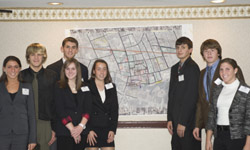 
What folks were saying about the 2010 Smart Growth Summit:
A sampling of attendees' positive reviews:
Dozens of elected officials were in attendance throughout the day, including:
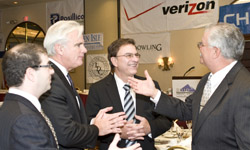 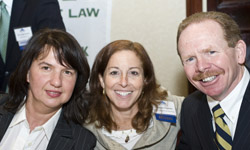
Brandon Palanker of Renaissance Downtowns, Former Suffolk County Executive Pat Halpin, Don Monti of Glen Isle and Farmingdale Mayor Butch Starkie (left); Dr. Nathalia Rogers of Dowling College, Adrienne Esposito of Citizens Campaign for the Environment and Peter Scully of the NYS EDC
 
Will Stoner of AARP NY (left); Paul Beyer of the NYS Smart Growth Cabinet (right)
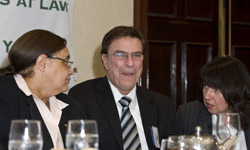 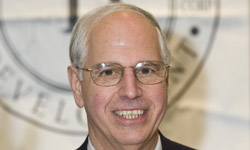
Joye Brown of Newsday, Don Monti and Dr. Nathalia Rogers of Dowling College (left); Peter Goldsmith of LISTnet (right)
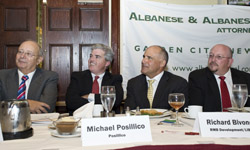 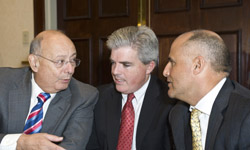
Hon. Al D'Amato, Town of Babylon Supervisor Steve Bellone, Posillico's Michael Posillico and LI Business Council's Rich Bivone (left); Hon. Al D'Amato, Town of Babylon Supervisor Steve Bellone and Posillico's Michael Posillico (right)
 
Vision's Eric Alexander and Verizon's Patrick Lespinasse (left); Peter Goldsmith of LISTnet, Terri Alessi-Micelli of HIA and Will Stoner of AARP NY (right)
 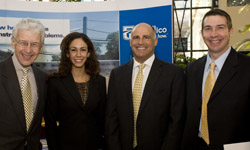
Vision's Eric Alexander, Vinny Frigeria of NYPA, Suffolk County Legislator Wayne Horsley and Adrienne Esposito of Citizens Campaign for the Environment (left); Mayer Horn of Greenman Pedersen, members of the Greenman Pedersen team and Michael Posillico of Posillico (right)
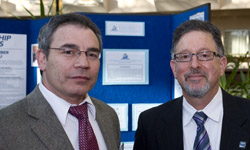 
Suffolk County Department of Planning's Andy Freleng and APA-LI Chapter and Cameron Engineering's David Berg (left); Dowling College's Dr. Nathalia Rogers and Neal Lewis of the Sustainability Institute at Molloy College (right)
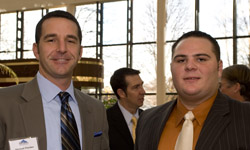 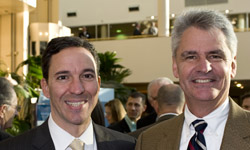
Michael Fletcher and Andrew Nicolia of Nicolia Industries (left); Mineola Mayor Jack Martins and Ken Pritchard of Dvirka and Bartilucci (right)
 
Kathy Eiseman of Nelson Pope & Voorhis and Deborah Herman of Building Long Island (left); Robert French of Carpenters Local 7 and Vision's Eric Alexander (right)
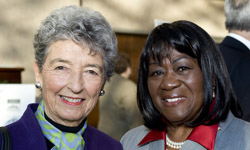 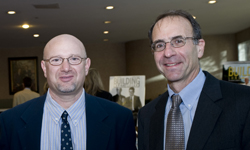
Marge Rogatz of Community Advocates and Town of Hempstead Councilwoman Dot Goosby (left); Scott Howell of LIRR and Bob Paley of the MTA (right)
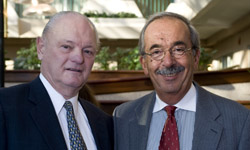 
Ken Christensen of Huntington Chamber of Commerce and Dick Koubek of Huntington Township Housing Coalition (left); Harras Bloom & Archer's Keith Archer and Paul Rogalle of the Town of Brookhaven (right)
 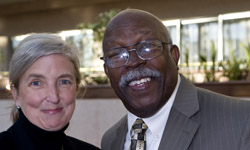
National Grid's John Keating (left); Sarah Bluestone and Stanley Deveaux (right)
  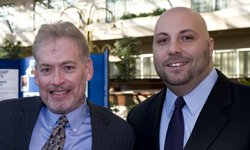
Sabrina DiAgostino of HIA, Terri Alessi-Micell of HIA; Carol Meschkow of Concerned Citizens of Plainview-Old Bethpage (left); Lowell Wolf of Nassau County and Eric Alexander (right)
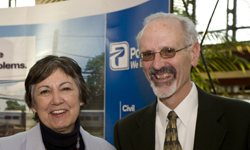 
Town of Brookhaven Councilwoman Connie Kepert and Ray DiBaise of LK McLean (left); Steve Rosetti of the Suffolk County IDA and Irwin Krasnow (right)
 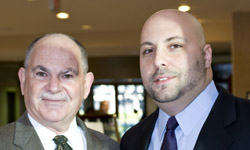
Eric Alexander and Mike Lydon of StreetsPlan Collaborative (left); Saratoga Associates' Bill Kuhl and Vision's Eric Alexander (right)
 
Eric Alexander with Cindy Mardenfeld of Infinity Communications (left); Larry Levy of the National Institute of Suburban Studies at Hofstra University with Eric Alexander of Vision Long Island and LI Business Council's Rich Bivone (right)
 
Forchelli Curto Deegan's Nina McCann and Eric Alexander (left); Fran Evans, Sharon Laudisi and Bert Cunningham of NYPA with Linda Bianculi of Town of Oyster Bay (right)
 
Richie Kessel of NYPA and Mayor of Plandome Barbara Donno (left); PS&S's Keith Samaroo and Mill Creek Residential's Maria Rigopoulos (right)
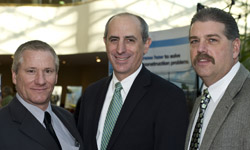 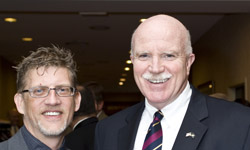
Joe Montalbano of Building Trades Council, Glen Cove Mayor Ralph Suozzi and Peter Zarcone of Building Trades Council (left); Peter Sloggatt of The Long Islander and Northport Village Trustee Tom Kehoe (right)
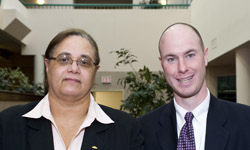 
Newsday's Joye Brown and Patch.com's David Reich-Hale (left); Susan Auriemma of the Coalition for a Safer Manhasset and Ann Marie Curd of Manhasset Civic Association(right)
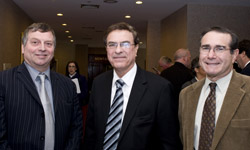 
Tony Harding of THEM media, Don Monti of Glen Isle Partners and Larry Levy of the National Institute for Suburban Studies at Hofstra University (left); Matt Harris of Say NO to Avalon Bay at Huntington Station and Jaci Clement of Fair Media Council (right)
 
David Winzelberg of LI Business News and BIll Mannix of the Town of Islip IDA (left); Huntington Town Councilwoman Susan Berland (right)
 
Joe Scalero of the Village of Mineola, Bert Cunningham of NYPA, Village of Mineola Mayor Jack Martins and Mike Ahrens of Brookhaven National Lab (left); Keith Brown of Brown & Altman and David Genoway of Town of Islip Planning Department
 
Brian Feruggiari, Town of North Hempstead Councilman Tom Dwyer, Bill Mannix of The Town of Islip IDA, Hon. Al D'Amato and PS&S's Keith Samaroo (left); Chic Voorhis of Nelson Pope & Voorhis and Peter Scully of NYS DEC (right)
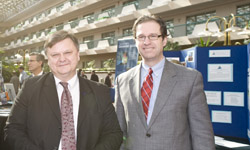 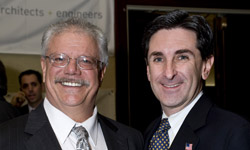
Bill Tuyn of Greenman Pedersen and Paul Beyer of the NYS Smart Growth Cabinet (left); Village of Farmingdale Mayor Butch Starkie and Nassau County Legislator Wayne Wink (right)
 
Patrick Lespinasse of Verizon, Georgette Grier-Key of the Huntington Arts Council and Tawaun Weber of Vision Long Island (left); Rabia Aziz of LI Minority AIDS Coalition and Diane from NY Communities for Change (right)
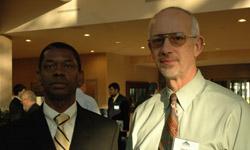 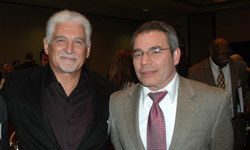
Philbert Robertson of the Hicksville Chamber of Commerce and John Wall of the Hicksville Gardens Civic Association (left); Bob Scheiner of H2M and Suffolk County's
Andy Freleng (right)
 
Gary Epstein, CPA and Town of Riverhead Supervisor Sean Walter (left); Jennifer Casey of the Huntington Economic Development Corp. and Leadership Huntington's Trudy Fitzsimmons (right)
 
Lead Sponsor

Gold Sponsors

Sponsors

Special Thanks
Nelson, Pope & Voorhis
Empower CES
Huntington Township Chamber of Commerce
Weidersum Associates
Town of Hempstead
Cameron Engineering
Town of Islip
Videomasters
Northport Copy
Livingston Development
LI Community Foundation
LIRR
Carpenters Union Local 7
Officeworx
Transportation Workers Union Local 252
Building Trades Association
Concern for Independent Living
MetroPool
Alcott HR Group
Not-For-Profit Supporters

SAVE THE DATES!!!

The 10th Annual Smart Growth Awards
Nominations due January 31st, 2011
Friday, June 17th, 2011
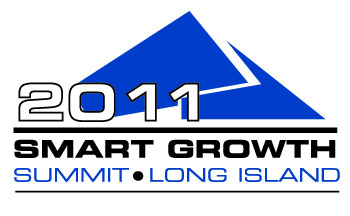
The 10th Annual Smart Growth Summit
Friday, November 18th, 2011
|

